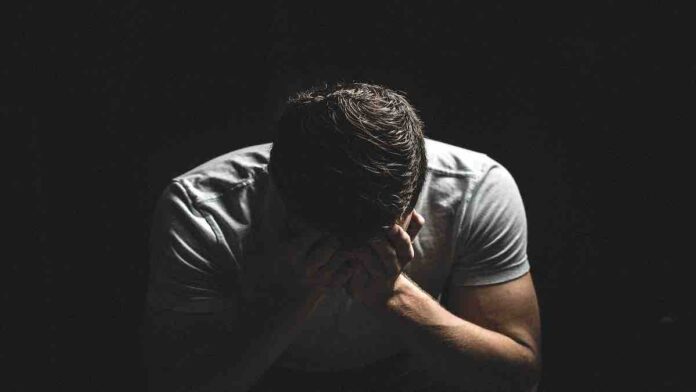Rape- The mere utterance of the word is enough to send chills down one’s spine. One of the most heinous crimes against a human body is Rape. It is a violation of consent, an atrocious use of the human body.
A rapist may be anyone – from a total stranger to someone close to the victim. A victim of this heinous act suffers through exceptionally harsh situations. The rape in itself is dreadful, and to add to that stand social stigmas, shame, self-blame and even mental illness.
“Rape” is forced, unwanted sexual intercourse. It is not about sexual activity, but only a way of dominance and power. It is further not restricted to merely a society or a group, but is present in every part of the word.
Who is the Victim?
While it is true that most victims of Rape are women, anyone regardless of age, gender, income, work etc. can be raped. However, the most common rape victims in India in reported cases are women from the age of 16 – 45. This is true throughout the world as well. Thus, the definition of rape immediately changes to “a crime committed by men upon women”; which is gender centric.
Even the Indian Penal Code, 1860, under Sec.375 says rape as a crime committed by a man on a woman. However, this is not true. As seen earlier, anyone can fall victim to forced sexual intercourse. The Protection of Children from Sexual Offences Act, 2019 does not make a distinction between sexual offences between male or female children. It sees that such crimes can be committed regardless of the victim’s gender.
Male Rape:
Many victims of rape are also men. Sadly, their cases are masked and ignored. There are various reasons for it. Due to a larger percentage of women victims, it is assumed that the crime is not against men and that only men are perpetrators. Male Rape is seen as taboo in society, thus becoming a negative connotation among heterosexual men. It directly targets manliness and masculinity. Consequently, most victims fear to report sexual assault. Anyways, reported rape cases are low and thus reported cases of male rape are even low.
Men are assumed to be “the stronger gender”, “dominating”, and “not vulnerable”; especially in a patriarchal society. This even stretches to put a “duty” upon the wife to fulfill the “sexual needs” of a man. Thus, they are always seen as a dominating gender and are always “down to get laid.” This creates an idea that sexual intercourse for men is always voluntary in nature. There is always the, “hey, whatever, you must have enjoyed it”, which in itself is wrong. The concept of consent is just as applicable to a man as it is to a woman.
The next question arises is, who would rape a man? Just like women are raped by men, men may be raped by women. But there is more to this conversation. An aspect of homosexual rape is also in the basket. Homosexuality is a concept known to all, but fully accepted by a few. Thus, even homosexual men are targeted and made victims to rape.
Also Read
Ground Scenario:
For a long time, the effects of rape were also only studied in cases of women and minimal research was done under male victims. The mindset that men cannot be raped has distanced these survivors from research. It has been found that male violent rape survivors suffer from the effects of an assault similar to that of female violent rape survivors. “Rape Trauma Syndrome” and post-traumatic stress disorder are common psychological manifestations of sexual assault.
In 2018, the National Crime Records Bureau (NCRB) said 109 children were sexually abused every day in India. But one aspect of this problem is always missing from records and statements – male sexual abuse.
Lokesh Pawar, a survivor of male rape said in his article with The Print, “men are constantly told to hide away their emotions behind the statement ‘Mard ko dard nahi hota’, and it leaves them torn with the fear of societal repercussion. The same view has led people to believe that a man or boy cannot be raped or sexually assaulted because of their privilege and standing in a patriarchal society. Sexual abuse is no less than an epidemic, and it needs the attention of lawmakers and people in this country.”
A survey done in Haryana regarding gender based violence against men, showed that 52.4% of men faced some form of it. However, this was in general violence against men, and also only reported cases. Just like women, cases of male rape are not reported due to social stigmas and expectations. This has resulted in a lack of data; thus resulting in lack of awareness and knowledge and thus, consequently delay in gender-neutral laws against sexual violence.
Legal Aspect of Male Rape in India:
As mentioned earlier, the current rape laws peculiarly distinguish rape as a crime on women by men. Current rape laws leave out a large group of male victims, who fail to come forward due to fear of stigma and lack of a legal recourse.
The meaning of Rape as in the IPC manifests that there’s no particular law if a male rapes another male or a female rapes a male. At most they can be sodomised under Sec.377 of IPC. Sec.377 criminalizes unnatural offences, stating homosexual intercourse as an offence. Although it was repealed in the case of Navtej Singh V. UOI( AIR 2018 SC 4321), it can be used to state a homosexual rape. The section was modelled on Buggery Act, 1533 where unnatural sex is an “Act against god”. Except for this section, all other provisions are meant for females. This inequality in the treatment of rape directly affects the male victims.
At present, there are only two laws that realize male rape:
- The Protection of Children from Sexual Offences Act, 2019;
- Sexual Harassment of Women at Workplace Act (Recognizes that men are also subjected to of sexual harassment at the workplace)
This paucity of rape laws for male raised the demand for gender-neutral rape laws in India.
Gender-Neutral Laws:
The lack of proper laws in this respect also leads to low conviction rates in the few cases that actually reach the court.
Law is a great tool for social change, and more gender-neutral laws will help the victims of rape, whether male or female. It will also help in a change in social mentality where myths like victim blaming and non-recognition of male rapes can be substantially subsided. It will allow a greater protection to male victims, transgender persons, and also members of the LGBTQ+ community.
The 172nd law commission in March 2000 recommended that rape laws in India should be made gender-neutral. This was to desexualize rape and eradicate the stigma attached to it. In 2017, a PIL was filed at the Delhi High Court by Adv. Sanjiv Kumar, which challenged the constitutionality of the rape laws, in which he stated:
“Men sometimes fall victim to the same or at least very similar acts to those suffered by women….Male rape is far too prevalent to be termed as an anomaly or a freak incident. By not having gender-neutral rape laws, we are denying a lot more men justice than is commonly thought.”
In 2019, the Criminal Law Amendment Bill, 2019 was brought before parliament to make the rape laws gender-neutral in India. The basic idea behind it is to propose necessary changes in the IPC, the Criminal procedure Code and the Indian Evidence Act. Gender-specific words like “any man” and “any woman” likewise, mentioned in 354A, 354B, 354C, 354D, 375 and 376 of IPC can be replaced by words like “any person”. This would provide protections to all gender i.e women, men and transgender.
Conclusion:
It is important to address the issues faced by both male and female survivors. More research, data and awareness in terms of Male Rape is necessary. As a society, it will help not only to eradicate stigmas and harmful gender-expectations, it will help in empowerment of the vulnerable.
The harsh reality of patriarchy needs to be realized that not only are women horrible victims of it, it is also men who fall prey to the patriarchal ideologies.
If a crime doesn’t discriminate between man and woman, why do we?
Edited by-
Rajat Rajan Singh
Editor-in-Chief at Law Trend
Advocate at Allahabad High Court Lucknow
Written by
Sai Kulkarni-Intern




